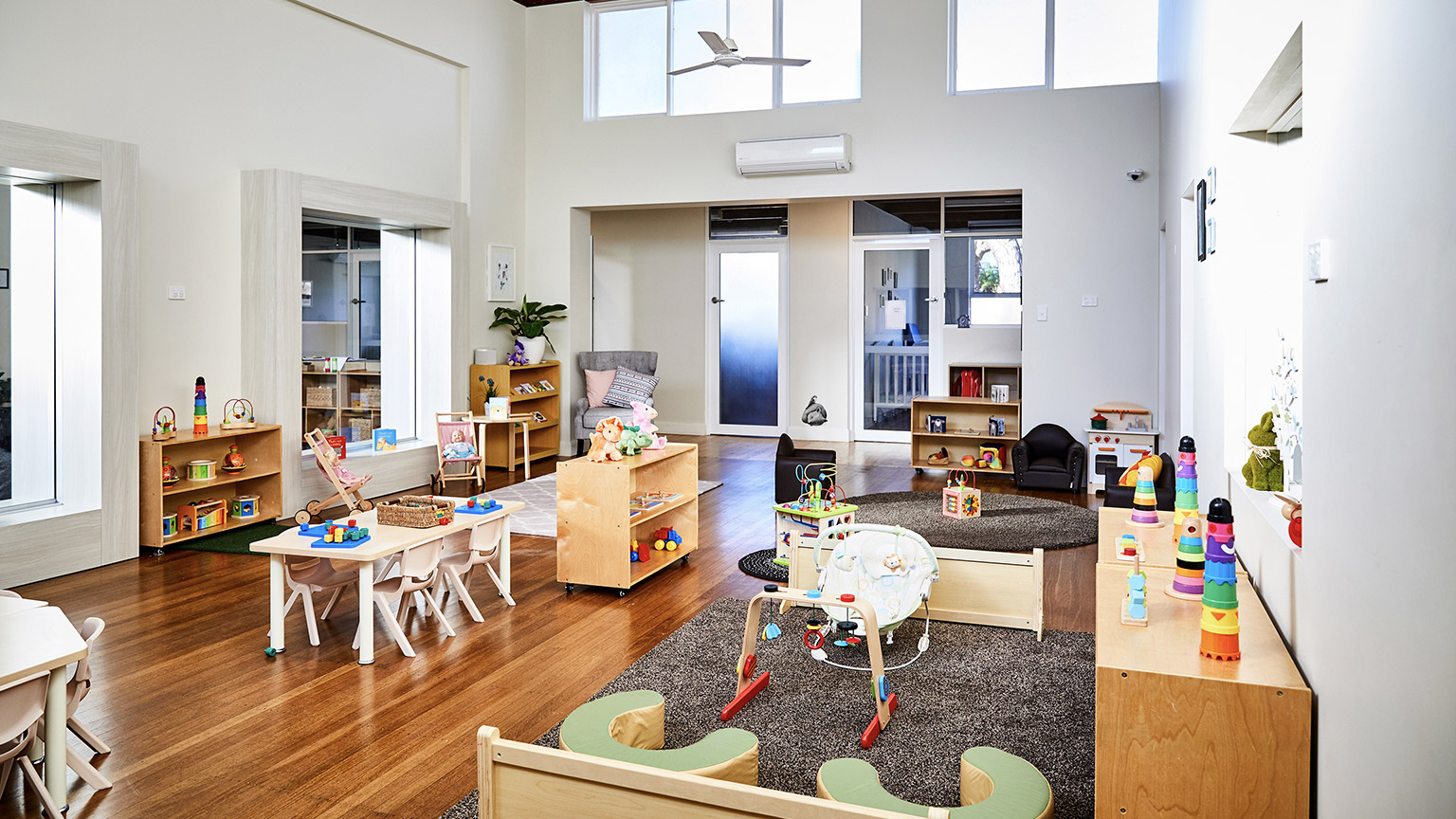Legislation for workplace health and safety (WHS), policies and procedures all aim to support the health and well-being of those who enter a workplace, are impacted by work activities or a combination of both.
This includes:
- employees
- contractors
- volunteers
- clients
- customers and visitors
The responsibility for WHS is shared between all parties involved. Please note that some regions use the phrase ‘workplace health and safety (WHS)’ while others use ‘occupational health and safety (OHS).’
In this topic, we will explore how WHS is legislated and regulated in Australia, including your rights and responsibilities for WHS and your employer’s duty to provide you with a safe workplace.
By the end of this topic, you will understand:
- Commonwealth and state WHS legislation and codes of practices
- Your rights and responsibilities with respect to WHS
- Workplace policies and procedures and how they support safe work practices
The International Labour Organisation and World Health Organisation Joint Committee on Occupational Health define WHS as:
The promotion and maintenance of the highest degree of physical, mental and social well-being of workers in all occupations.
Forastieri, 2014

Workplace health and safety legislation sets out the health and safety requirements affecting all Australian workplaces and work activities. This legislation provides a framework for managing health and safety risks in workplaces and sets out legal requirements affecting the performance of work that must be followed.
Regulations set out the legal requirements to prevent or control certain hazards that might cause injury or death in the workplace. If a regulation exists for specific risks at your workplace (e.g. noise, hazardous substances, confined spaces, etc.), in order to meet your obligations under the Act you must do what the regulation says to prevent or minimise the impact of the risk.
Workplace Health and Safety legislation contains obligations to exercise a ‘duty of care’ in relation to health and safety in the workplace. Duty of care places into a legal form a moral duty to anticipate possible causes of injury and illness and to do everything reasonably practicable to remove or minimise these possible causes of harm.
Work Health and Safety Regulation 2017
The Work Health and Safety Regulation 2017 came into effect on 1 September 2017. It is essentially the same as the 2011 Regulation, except for minor changes, including formatting and corrections to typos. The changes are outlined in this table.
Workplace Health and Safety legislation contains obligations to exercise a ‘duty of care’ in relation to health and safety in the workplace. Duty of care places into a legal form a moral duty to anticipate possible causes of injury and illness and to do everything reasonably practicable to remove or minimise these possible causes of harm.
You must take reasonable action to make sure that:
- Accidents are prevented
- People are protected from being hurt
- Health is looked after and encouraged
- Hazards are removed or controlled
Under WHS legislation your workplace is obliged to provide:
- Safe premises
- Safe machinery and materials
- Safe systems of work
- Information, instruction, training and supervision
- Suitable working environment and facilities
It is your responsibility to make sure you know the safety procedures and concerns for your industry and always apply safe work practices. Work Health and Safety Duties – Legislative Fact Sheetcan be downloaded from Safework Australia.
WHS Legislation around Australia
All work activities must be carried out in line with the relevant state or territory legislation. The Work Health and Safety Act 2017 is Commonwealth legislation that provides the basis for a nationally consistent WHS approach. Each state and territory have their own legislation regarding WHS as well as their own regulator. Regulators are responsible for regulating and enforcing WHS safety within their own jurisdiction. You can see the individual state's/territory's regulators and access the relevant legislation and regulation by clicking on the icon located in the individual state/territory within the following map:
(You can access the legislations and regulations on the regulators' official website as well.)
The key aims for WHS legislation are to:
- Protect the health, safety and well-being of persons at work
- Eliminate risks to health, safety and the wellbeing of persons at work and the public
- Ensure that employers and workers collaborate on issues affecting workplace health and safety
- Assist employers in achieving a healthy and safe workplace
Definition of a Worker
The Work Health and Safety Act 2011 (Cwlth) uses the term ‘worker’ to encompass all people who carry out work in any capacity. This includes employees, volunteers, contractors and sub-contractors.
Codes of Practice
A code of practice is a guide approved under the Work Health and Safety Act 2011 (Cwlth). The purpose of codes is to provide practical advice on how to manage specific risks in order to meet WHS standards outlined in legislation.
Commonly used codes of practice are:
- Health and Safety (How to Manage Work Health and Safety Risks) Code of Practice 2015
- Work Health and Safety (First Aid in the Workplace) Code of Practice 2015
- Work Health and Safety (Hazardous Manual Tasks) Code of Practice 2015
- National Law and Regulations
- Guide to the NQF
Note
A full list of codes approved under the Work Health and Safety Act 2011 (Cwlth) is available on the Australian Government’s Comcare website
Safety data sheets
In a children's education and care service, cleaning products and disinfectants classify as hazardous chemicals. Some paint and glue can also be classified as dangerous.
Some dangerous hazardous chemicals may produce health effects that can happen straight away like poisoning and burns, or cause long-term health conditions, like nerve damage, lung damage or cancer. Others can present a physical hazard, like fires, explosions, corrosion.
Almost every hazardous chemical that you use or store will require Safety data sheets (SDS). SDS have important safety information about hazardous chemicals that can help keep your workers safe.
An SDS is a document that provides detailed information about a hazardous chemical, including:
- The name of the chemical product and its ingredients. Since most products and chemicals have a trade name, both the trade name and the common chemical name appear on the label.
- Risk phrases: This is a general description of the hazards. For example, phrases such as ‘Toxic if swallowed’ or ‘Irritating to skin’ indicate the way in which harm could occur. These phrases are selected by the supplier from a standard list of phrases based on the health criteria classification.
- Safety phrases: Safety phrases provide information on safe storage and handling, and personal protection. Examples are:
- ‘Keep container dry’.
- ‘When using, do not eat or drink’.
- ‘Wear suitable protective clothing’.
- Directions for use: This section of the label provides directions on how the chemical should be used, in more detail than the safety phrases.
- First aid: Brief first aid instructions are provided for immediate treatment if exposure or contact with the chemical occurs. These instructions are based on methods and materials commonly available.
- Emergency procedures apply to situations such as spillage, fore, leak or leakage of the chemical. This includes the type of equipment to be used, such as the type of fire extinguisher to use.
- Details of the manufacturer or supplier: This is the name, address and Australian emergency telephone number of the manufacturer or supplier initially responsible for distributing the chemical. This is also the source of Safety Data Sheets (SDS).
Click here to access an example SDS for a common cleaning product.
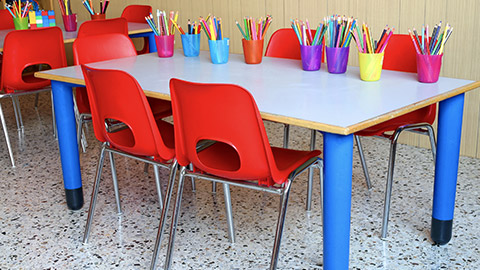
Procedures and instructions
WHS information and procedures must be available to all workers and it is your responsibility to ensure that you know where and how to access this information. It is recommended that there is a general point of reference for WHS materials and information, including updated legislation and policy documents as well as Safety Data Sheets and incident reports. It is everyone’s responsibility to adhere to safe work practices in order to reduce the risk of a workplace accident. These include:
- Using personal protective clothing and equipment, including storage and maintenance
- Practising safe posture and movements, including sitting, standing and bending
- Safe manual handling techniques, e.g., when lifting, moving, etc.
- Safe use of equipment such as ladders and trolleys
- Taking designated breaks
- Safe use of knives and sharp equipment
- Safe handling of hot surfaces / equipment / materials
- Reporting and safe disposal of damaged equipment / materials
- Safe use of computers and electronic equipment
- Safe handling of chemicals, poisons and dangerous materials
- Using ergonomically sound furniture and workstations
- Clearing any hazards from immediate work area
- Paying attention to safety signage including when they need to be replaced
Case study
You are working as the assistant in the Kindy room. You and your Group Leader have planned an outdoor herb gardening morning session. When the children are standing around the metal garden frames you notice sharp bits of rusty metal have now become exposed.
a. According to WHS workplace legislation, what type of risk is this?
b. Explain what steps you would take while still following the risk control method
Safety signs
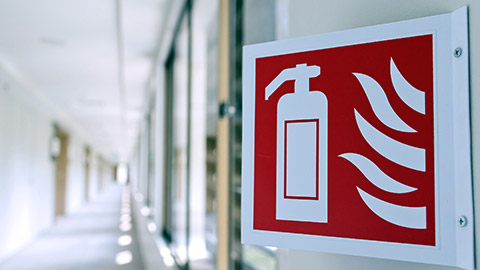
It is important that both workers and people who access and use the service are aware of and understand the meaning of alarms, safety signs and symbols.
Safety signs to alert workers to:
- The presence of hazards and dangerous goods
- The availability of and the requirement to wear personal protective equipment and
- The locations and use of emergency equipment
Emergency signals and alarms may include:
- Machinery malfunction alarms
- Serious injury alarms
- Distress alarms
- Fire alarms
- Evacuation alarms
Your organisation should have an appointed WHS representative (or a committee for larger organisations) who is responsible for ensuring that all workers are up-to-date on WHS information, instructions and procedures. They are a consultation point between the workers and senior management of the organisation. This person may provide workers will handouts, training opportunities or coaching. They will also help workers locate and apply WHS information available outside their organisation.
According to SafeWork Australia, WHS representatives have the following powers and functions:
- represent the workers in their work group in relation to WHS matters
- monitor the PCBU’s compliance with the WHS Act
- investigate WHS complaints from members of the work group; and
- inquire into WHS risks to workers.
If your organisation does not have a WHS representative, talk with your supervisor about appropriate training if you are interested.
All workers must follow all work instructions and procedures related to safety in their workplace, including:
- Safety procedures for using kitchen areas
- When working with children, having more than one adult in the room for supervision
- Food handling
- Lifting and carrying
- Chemical handling
- Being the last to leave the facility
- Dealing with injury – there will be a specific protocol for what to do when someone gets hurt; who goes for help and in what order steps should be taken. For example (check the scene first, call for help, if no one responds to you call for help, leave the injured person unattended while getting help)
- Protocol for medical emergencies – consider the steps to be taken and who should be notified. The policy should be clear and practiced
Additional information can be found at:
Your employer is obliged to develop policies and procedures to address WHS issues. These policies and procedures must detail how to minimise the risk or potential risk of injury, disease or other potential adversities that could impact a worker. Under Regulation 168 of the Children Service's Regulations, the education and care service must have policies and procedures.
An employer’s policies and procedures must be supported by methods for ensuring that workers are aware of and clear on how to follow policies and procedures. Policies and procedures should include:
- Methods for consulting with employees regarding WHS representation and risk management
- Processes for identifying, reporting and addressing risks and hazards
- Staff WHS training and induction processes
- Site or organisation-specific information (for example, details on how to manage specific risks or hazards or how to use and maintain specific equipment)
Procedures will ensure that you know:
- What is expected of you
- The rules and guidelines for decision-making in routine situations
- What response is clear and consistent across the organisation when dealing with situations
Website
Your organisation’s policies and procedures are most likely developed from Safe Work Australia’s Code of Practice (Safe Work Australia, n.d.), which is available on Safe Work Australia’s website.
Workplace Health and Safety in Education and Care Services
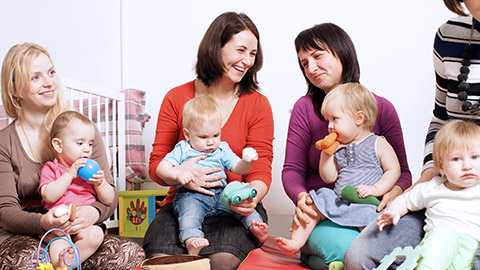
Quality Area 2 (Children’s health and safety)
A primary objective of the NQF is to ensure the health, safety and wellbeing of children attending education and care services. Under the Education and Care Services National Law (the National Law), providers of these services have the responsibility for ensuring the health, protection, safety and wellbeing of all children. Central to this objective is Quality Area 2 of the NQS, which reflects the principle that children have a right to be protected and kept safe.
| QA2 | Children's health and safety | |
|---|---|---|
| 2.1 | Health | Each child's health and physical activity is supported and promoted. |
| 2.1.1 | Welbeing and comfort | Each child's wellbeing and comfort is provided for, including appropriate opportunities to meet each child's need for sleep, rest, and relaxation. |
| 2.1.2 | Healthcare practices and procedures | Effective illness and injury management and hygiene practices are promoted and implemented. |
| 2.1.3 | Healthy lifestyle | Healthy eating and physical activity are promoted and appropriate for each child. |
| 2.2 | Safety | Each child is protected. |
| 2.2.1 | Supervision | At all times, reasonable precautions and adequate supervision ensure children are protected from harm and hazard. |
| 2.2.2 | Incident and emergency management | Plans to effectively manage incidents and emergencies are developed in consultation with relevant authorities, practised, and implemented. |
| 2.2.3 | Child protection | Management, educators, and staff are aware of their roles and responsibilities to identify and respond to every child at risk of abuse or neglect. |
Clear policies can help avoid conflict
When the child enrols, provide parents with a copy of the education and care service’s policies on exclusion, hand hygiene, cough and sneeze etiquette, immunisation and medication. Encourage parents to discuss these policies with you. The exclusion policy is the policy most likely to cause concern—make sure parents understand why the service has an exclusion policy.
Most parents will appreciate your attempts to prevent illness in their children. It is especially important that parents support the education and care service’s policies on hygiene and infection control. Ask parents to encourage their children to perform effective hand hygiene when they arrive at the education and care service, and when they leave.
Education and care services should not be influenced by letters from doctors stating that the child can return to care unless the child’s condition fulfils the criteria for returning to care. Sometimes doctors can make different diagnoses for children in the same education and care service with illnesses that appear similar. It is the doctor’s role to make the diagnosis, but education and care services can use the information in Staying healthy to decide on their response to an illness (e.g. the required exclusion time). Your local public health unit can help you with these situations, or if you are in doubt about exclusion.
Emergency Procedures
Under the Education and Care Services National Regulations, an approved provider must ensure that policies and procedures are in place for emergency and evacuation (regulation 168) and take reasonable steps to ensure those policies and procedures are followed (regulation 170).
Regulations 97
Regulation 97 explains the education and care services requirements for emergency and evacuation procedures and the service requirements.
Managing emergency situations in Education and Care Services
Examples of emergency situations that may affect an education and care service:
- Accident or serious injury to child or staff member where medical attention or hospitalisation is required
- Burst water main or pipe
- Fire
- Flood
- Cyclone, severe storm or dust storm
- Blizzard or ice
- Atmospheric contaminant
- Dangerous animal, insect or reptile
- Violent or potentially violent individual
- Bomb Threat
- Seige or hostage situation
- Gas leak
- Lost, missing, unaccounted for or abandoned child
- Fatal incident involving a child, family member, or staff member of the service
People who may be involved
- Children
- Educators/ Staff
- Families
- Visitors or contractors
- Emergency contacts
- Relevant agencies
- Police and emergency services
- Telecommunication services
- Transport services
- Media
Characteristics of an emergency may be that they are sudden, unexpected, dangerous or distressing. Emergency situations may challenge the educator’s beliefs and the policies and procedures of the education and care service. Normality is threatened. The situation may induce a strong emotional reaction that could have the ability to hamper clear thinking. Planning to manage incidents and emergencies assists services to protect adults and children, maintaining children’s wellbeing and a safe environment and meeting requirements of relevant occupational health and safety legislation. (Guide to the National Quality Standard, p.78).
Managing Emergency Situations in Education and Care Services
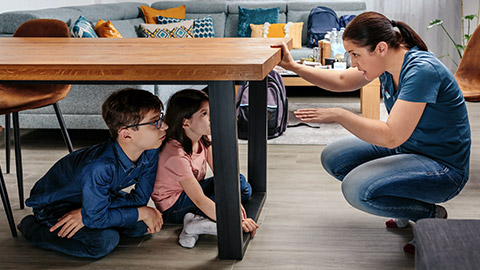
Potential reactions
When presented with a crisis our minds and bodies respond quickly. This is reflected in a change in our mental state; how we think and how we act. This reaction may be varied in different people, and until experienced, is often an unknown reaction. For this reason, it is important that policies and procedures are in place and are well practised by educators and children. Signs of panic that may be exhibited:
- Shallow breathing: your breath becomes shallow and the person can feel like there is not enough air to fill their lungs;
- Increased heart rate: a person may feel their heart beating faster than normal, and may report a pounding heartbeat or palpitations;
- Sweating: hot or cold sweats are common;
- Discomfort in the chest area: including chest pain or tight feeling in the chest;
- Nausea: a bloated feeling or abdominal discomfort;
- Behavioural changes;
- Confusion or speech difficulties;
- Trembling muscles or uncontrollable shaking: both visible or just a feeling of shaking all over;
- An urgent need to go to the toilet
- Children may become clingy or withdrawn
Having a clear plan for the management of emergency situations assists educators to handle these calmly and effectively, reducing the risk of further harm or damage (Guide to the National Quality Standard, p.78). Educators need to be aware that when confronted with a crisis, children will be less capable of concentrating. They may be anxious and more attuned to nonverbal cues such as tone of voice, body posture and facial expressions. Educators need to monitor children closely. If adults are unable to remain calm, they should be removed from the direct care of children.
For each education and care service, the potential for emergency situations is varied. An emergency in relation to an education and care service includes any situation or event that poses an imminent or severe risk to the persons at the education and care service premises (Education and Care Services National Regulations, p 5). To determine what policies and procedures your education and care service requires, undertake a risk assessment. Risk assessments assist with identifying potential hazards and define or determine the level of risk or danger. The risk assessment process will help to identify the current control measures that are in place and determine if further control measures may be required.
Regulatory Compliance

The National Quality Standard, Element 2.3.3 encourages education and care services to effectively manage incidents and emergencies and to plan for these in consultation with relevant authorities. These plans should be practiced frequently and reviewed regularly. Education and care services must be aware of current Regulation and include regulatory requirements in written policies and procedures. Policies and procedures should be regularly practiced, monitored and reviewed to determine currency and effectiveness. Procedures must include clear instructions for what must be done by the Nominated Supervisor, educators and other adults. These instructions must be displayed in prominent positions near exits and in children’s environments with a corresponding floor plan for ease of reference.
Clearly defined roles and responsibilities for educators and staff are essential to planning for emergency situations by defining the roles and responsibilities of educators and staff. These roles and responsibilities must be discussed and practised regularly to ensure everyone is aware of their responsibility in the event of an emergency.
An example of role delegation
Educator and staff priorities
During an emergency, educators and staff may have family members of their own that they may be concerned about which can create additional stress. To address these concerns, consider including in your policy items such as allowing time for educators and staff to contact their immediate family to enable them to make decisions around their safety and wellbeing.
Below is a role responsibility table example of the role delegations that service may have in place when an emergency situation is unfolding. Whether this is to complete one of two actions either staying or leaving the service.
| Nominated supervisor | Responsible person | Educator |
|---|---|---|
| Alerts the service of the emergency | Collects first aid kit | Ensure the safety and wellbeing of the staff and children |
| Oversee the decision-making process and make final decisions | Collects sign in sign out sheet | Follow the directions of the RP and the NS |
| Complete a thorough check of premises before leaving or locking down service | Collects emergency contact list and service phone/mobile | Effective supervision of children whilst transporting them to safety |
| Contact emergency services, keeping in communication with them | Main contact for families in the emergency | Delegated first aid person provides first aid to children if required |
Each education and care service will need to develop suitable emergency plans based on the risk assessment outcomes. Plans should reference specific emergency exits, appropriate evacuation points relevant to the situation; including the education and care service location and contact details. All emergency plans need to include an emergency pack that contains a first aid kit and updated family/emergency contact lists. Staff sign on sheets and child attendance records should be collected in each situation.
Emergency procedures should be practised every three months to meet regulatory requirements under Regulation 97. To embed the evacuation process into regular practice for educators, children, families and regular visitors. Services are required to document this and keep evidence of these practices occurring at the service.
Evacuation Plans

An evacuation plan is used where it is deemed necessary to evacuate the immediate area or building to ensure the safety and wellbeing of children and adults. The emergency and evacuation floor plan, and instructions should be displayed in a prominent position near each exit at the service premises, including a family day care residence or approved venue (Guide to the Education and Care Services National Law and the Education and Care Services National Regulations).
Evacuation plans must contain clearly defined assembly points. It may be necessary to have different assembly points depending on the emergency and where the threat may be coming from. The assembly point should be within easy access of the education and care service and known to families. To support all educators and staff to have a clear understanding of their role in an emergency situation, evacuation plans should include a visual map of the education and care service and a one-page, step-by-step overview of the evacuation process. The visual map should have clearly marked exits and exit routes from all locations within the education and care service.
The one-page overview of the evacuation process should state who is responsible, what needs to be collected, the location of the assembly point and contain the physical address of the assembly point location and all contact details of the service for easy reference. Both the visual map and the written overview of the evacuation plan must be displayed in all areas of the education and care service.
Step 1
Whoever finds the emergency, sounds the alarm warning and notifies the person in charge.;
Step 2
Nominated Supervisor calls 000 (landline), calls on UHF radio (remotely located services) or rings 112 (mobile telephone) stating name and address of the education and care service and the nearest cross street. Advise staff of the nominated assembly point.
STEP 3
Delegated first aid person collects the emergency pack, mobile phone, emergency contact lists, staff sign in sheets and children’s attendance records (there may need to be a delegated first aid person for each room of the education and care service).
STEP 4
Delegated first aid person administers first aid where necessary.
STEP 5
From the assembly point, the Nominated Supervisor continues to liaise with emergency services and other relevant agencies.
STEP 6
From the assembly point, the Nominated Supervisor continues to liaise with emergency services and other relevant agencies.
STEP 7
Remain at the assembly point until advised by emergency services it is safe to return to the education and care service.
Sample evacuation plan all educators and staff:
- Gather and walk children, calmly to the nominated assembly point. All available adults to assist with the babies and younger children.
- Close windows and doors as exiting, if possible
- Check attendance rolls when gathered at the assembly point
- If a person is missing, advise the Nominated Supervisor and emergency services as soon as possible
- Support and supervise children until families arrive, and
- Ensure all children are signed out as they are collected.
Emergency Lockdown
Planning for an education and care service lockdown
Not all emergency situations will require education and care services to evacuate from the premises. Some situations, such as the threat of a violent person or a police operation in the vicinity, may require the service to go into lockdown. This means that the education and care service locks all doors and windows and where possible, removes children, educators and other adults from view. These situations may take time to be resolved and locations should be selected to allow for easy access to kitchen, bathroom and nappy change facilities. These areas will need to allow for children to engage in small or large group experiences during the lockdown period.
STEP 1
Whoever finds or is made aware of the emergency sounds the alarm and notifies the Nominated Supervisor.
STEP 2
All educators and staff lock external doors and windows and close blinds or curtains where possible. All available adults to assist with moving babies and younger children to the designated assembly point.
STEP 3
Where the education and care service was not notified of the emergency situation by Police, the Nominated Supervisor on premises calls 000 (landline), calls on UHF radio (remotely located services) or rings 112 (mobile telephone) stating name, address of the service and the nearest cross street.
STEP 4
Check attendance rolls. If a person is missing, advise the Nominated Supervisor as soon as possible.
STEP 5
All educators and staff support and supervise children’s wellbeing until the situation is resolved.
STEP 6
Delegated first aid person administers first aid if necessary.
STEP 7
Delegated first aid person collects the emergency pack, mobile phone, emergency contact lists, staff sign-in sheets and children’s attendance records (there may need to be a delegated first aid person for each room of the education and care service).
STEP 8
From the assembly point, the Nominated Supervisor continues to liaise with emergency services and other relevant agencies.
STEP 9
Delegated communications person contacts families or emergency contacts to notify them of the emergency situation. If advised, arrange for children’s collection.
STEP 10
Remain in lockdown until advised of all clear by emergency services.
Sample Lockdown Plan
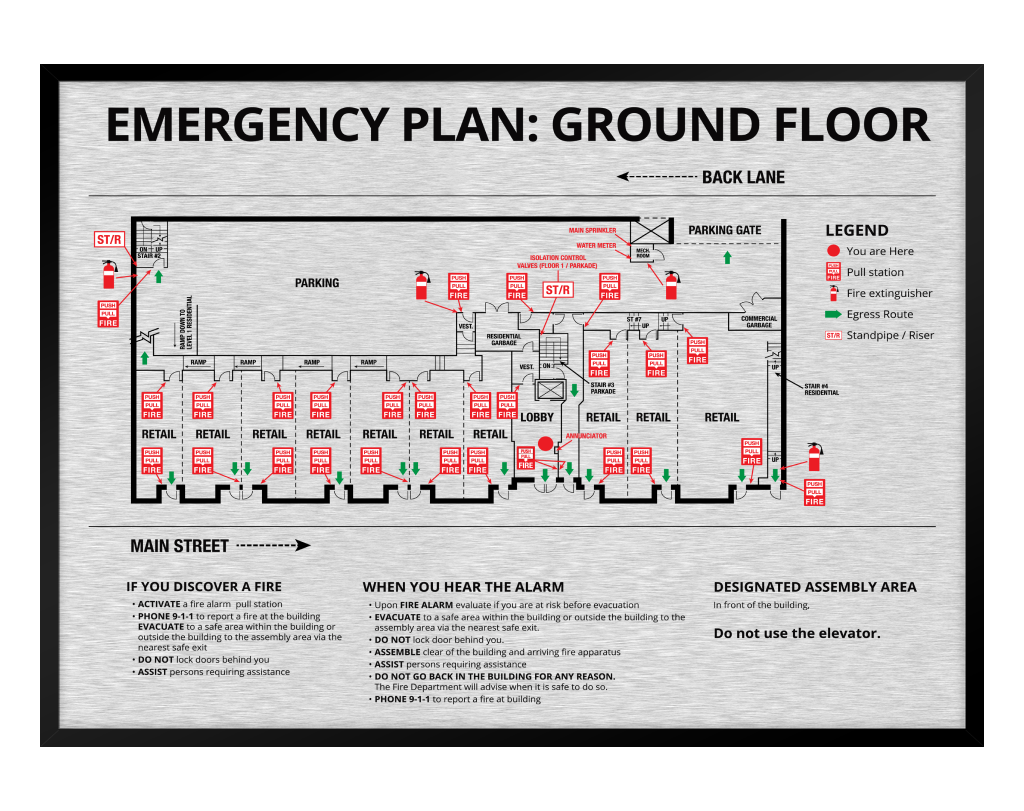
This may occur before families and carers are able to pick up their child or are even advised of the situation. Often, if there is a chance of a fire or flood endangering the education and care service, cancelling the service for the day is the preferred and safest option. Check with emergency services or local authorities when making this decision. Relocating is an emergency option put in place to secure the wellbeing of the children and adults at the education and care service. The relocation plan will follow the evacuation plan steps but include a clearly defined area to relocate to. This relocation area must be deemed safe by emergency services prior to implementing the relocation plan. This relocation area will need to be risk assessed regularly to ascertain if it is the most appropriate location to move to. Input should be sorted from local emergency services and the service management as to the appropriateness of this location should an emergency situation occur. Keep families updated regularly of the relocation site and have ready-made laminated signs that can easily be displayed in relocation situations that alert families and emergency workers of the designated relocation site. Include a map with clear directions from the education and care service to the relocation site for easy reference.
Things to take into consideration for a relocation site are:
- Does this site provide a safe alternative?
- Is pre-planned transportation required?
- Is there running water?
- Is there access to bathroom facilities?
- Is shelter available?
- Is there mobile phone reception?
- Can this location be easily accessed by families and emergency services? In the case of relocation, contact the local emergency services to find out if the relocation area and proposed route is safe before proceeding.
A sudden event or situation that requires an immediate response can be scary. In emergencies, people can panic or become confused. The best way to make sure emergency situations are handled as well as possible is to plan, prepare and practise for them. For example, in a childcare centre, the adults must be able to ensure their own safety and that of the children in their care. While older children may be able to follow verbal instructions and remove themselves from the danger, babies and toddlers will need a much higher level of support from staff. All workplaces must have a comprehensive and well-practised plan in place to deal with emergencies. All workers need to be familiar with the emergency plans in the workplace and confident in their responsibilities.
What to do in an emergency
1. Understand the situation:
- What is the emergency?
- What is the main issue?
- What else is going on?
- Who is in danger?
2. Follow your organisation's policies and procures for acting in an emergency. Your workplace will have specific emergency procedures in place to be used. You must make sure that you know and clearly understand all the emergency procedures and contacts of your organisation, city or area, and state/territory. You must also be aware of local community protocols in relation to these procedures.
Fire procedures
Follow these steps in the case of fire:
- Locate the source of the fire.
- Locate any people. Check all storerooms, kitchen area and toilets.
- Remove all people from the building Get everyone out
- Once outside do a head count. Make sure everyone is safe.
- Notify the authorities. Ring 000.
- Try to keep calm.
Evacuation procedures
Follow these steps in case of evacuation:
- Walk quietly but quickly to the nearest exit and proceed to the assembly point outside the building to await further instructions.
- Listen and follow instructions from the supervisor.
- To prevent injury and panic during evacuation it is important to do the following:
- Do not run, push, or overtake
- Use stairs - do not use lifts
- Do not return to your area of work
- Do not return to the building until the authorities give the 'all clear'.
Emergency and evacuation procedures should be reviewed regularly and must be rehearsed at each approved education and care service. This will assist educators and staff to handle emergencies calmly and effectively, reducing the risk of harm or injury. Given the inherent nature of emergency and evacuation situations, relevant policies and procedures should be sufficiently detailed and well understood so that all staff can react confidently and undertake their designated role in an emergency.
To comply with legislation and to be effective, your Emergency and evacuation policy and procedures must:
- be informed by a risk assessment that identifies potential emergencies relevant to your service
- set out instructions for what must be done in the event of an emergency
- include an emergency and evacuation floor plan (noting that a copy of the plan and instructions must be displayed in a prominent position near each exit at the service premises, and should be displayed prominently near each exit that forms part of the evacuation route out of the service)
- be rehearsed and documented every three months. If the service has more than one emergency and evacuation procedure, all procedures must be rehearsed every three months. For example, if you have identified both a lock down and evacuation response procedure in your risk assessments, and incorporated them in your emergency plan, you will need to rehearse both every three months. In addition, educators and staff must have ready access to a telephone or similar means of communication (regulation 98).
Your policy and procedures will need to consider different types of emergencies. Emergencies situations can range from fire and smoke to personal injuries and threats, bomb threats, suspicious mail, biohazards and chemical spills, gas leaks, floods, and other natural disasters. Such emergencies may necessitate a need to evacuate or initiate a lockdown. It is important that your policy and procedures contain sufficient detail to address all emergency scenarios in the context of each service environment. Different emergency situations may present different levels of risk and require different responses, dependent on where a service is located. For example, a service might be in a flood prone region, or be surrounded by bushland making it more susceptible to bush fires.
RELOCATION
Should there be a fire or flood approaching an education and care service, relocation away from the service may be necessary.
This may occur before families and carers are able to pick up their child or are even advised of the situation. Often, if there is a chance of a fire or flood endangering the education and care service, cancelling the service for the day is the preferred and safest option. Check with emergency services or local authorities when making this decision.
Relocating is an emergency option put in place to secure the wellbeing of the children and adults at the education and care service. The relocation plan will follow the evacuation plan steps but include a clearly defined area to relocate to. This relocation area must be deemed safe by emergency services prior to implementing the relocation plan. This relocation area will need to be risk assessed regularly to ascertain if it is the most appropriate location to move to. Input should be sort from local emergency services and the service management as to the appropriateness of this location should an emergency situation occur.
Keep families updated regularly of the relocation site and have ready-made laminated signs that can easily be displayed in relocation situations that alert families and emergency workers of the designated relocation site. Include a map with clear directions from the education and care service to the relocation site for easy reference.
Things to take into consideration for a relocation site are:
- Does this site provide a safe alternative?
- Is pre-planned transportation required?
- Is there running water?
- Is there access to bathroom facilities?
- Is shelter available?
- Is there mobile phone reception?
- Can this location be easily accessed by families and emergency services?
In the case of relocation, contact the local emergency services to find out if the relocation area and proposed route is safe before proceeding. As with any emergency, education and care services will need to thoroughly evaluate the relocation process. Emergency services, the service management, families and the staff should all be involved in the review of the relocation plan. Feedback and input from all parties will determine improvements or changes that are made to emergency evacuation policy and procedures.
The Commonwealth WHS legislation defines the health and safety responsibilities for a number of parties. These ‘duty holders’ are summarised in the table below:
| Persons conducting business or undertaking(PCBU |
|
| Officers (for example,company directors) |
|
| Designers, manufacturers and suppliers |
|
| Workers |
|
Safe Work Australia, n.d. [A]
Employer’s Duty of Care
Your employer has a duty to all workers to ensure that the worker is safe from injury to risks and health while at work.
This includes:
- Providing and maintaining a safe work environment
- Providing and following safe work systems
- Consulting with workers on how WHS is managed in the workplace (by establishing WHS committees or nominating WHS representatives, for example)
Safe Work Australia, n.d. [A]
Supervision
The importance of actively supervising children to promote children’s health, safety and learning is reflected in Quality Area 2 of the National Quality Standard (NQS), in particular:
- Standard 2.2: Each child is protected.
- Element 2.2.1: At all times, reasonable precautions and adequate supervision ensure children are protected from harm and hazard.
Legislative Requirements
National Law
- Section 165: Offence to inadequately supervise children.
- Section 167: Offence relating to protection of children from harm and hazards
- Section 174: Offence to fail to notify certain information to Regulatory Authority
National Regulations
- Regulation 101 (2)(f): Supervision during excursions.
- Regulation 115: Premises designed to facilitate supervision.
- Regulation 168(2)(h): Policies and procedures are required in relation to providing a child safe environment.
- Regulation 176: Timeframes for notifying certain information to the Regulatory Authority.
Supervision Requirements
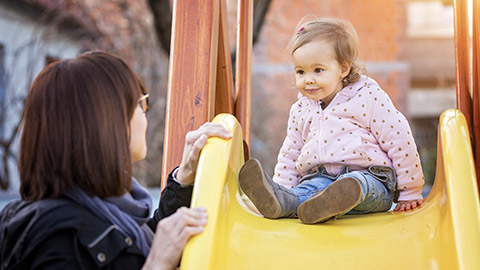
The Education and Care Services National Law and National Regulations require that all children being educated and cared for at an approved service are adequately supervised at all times and are protected from harm and hazards. There are also requirements to notify the regulatory authority of any serious incidents or complaints alleging the safety, health or wellbeing of children has been compromised. If children are not effectively supervised, a situation may arise in which the regulatory authority will need to be notified. The National Regulations also prescribe the minimum number of educators required to educate and care for children and prescribe the required qualifications for educators, including how many educators are to be early childhood teachers. Services must maintain set educator-to-child ratios at all times based on the ages and number of children being educated and cared for at the service. The requirements for educator-to-child ratios can be found on the ACECQA's website.
| Age of children | Educator to child ratio | Applies |
|---|---|---|
| Birth to 24 months | 1:4 | All states and territories |
| ver 24 months and less than 36 months | 1:5 | All states and territories excluding VIC |
| 1:4 | VIC | |
| 36 months up to and including preschool age | 1:11 | ACT, NT, QLD, SA, VIC |
| 1:10 | NSW | |
|
1:10 2:25 for children attending a preschool program |
TAS | |
|
1:10 |
WA | |
| Over preschool age | 1:15 | NT, QLD, SA, TAS, VIC, NSW |
| 1:11 | ACT | |
|
If no Kindergarten children present 1:10 for first 12 children then 1:13 (eg. If 11 or 12 children present, 2 staff members still required) Refer to table in Reg 369 for full breakdown |
WA |
Active Supervision
Educators promote children’s learning and development by creating physical and social environments that have a positive impact. It is necessary for educators to be alert and aware of risks and hazards and the potential for accidents and injury, not only in their immediate location but also throughout the service. To provide effective supervision, educators need to be conscious of the physical environment and be attuned to the needs of individual children.
The following 5-minute video explains active supervision in an early childhood education and care setting:
The way that children interact with each other and with adults in education and care services means that diseases can quickly spread in a variety of ways. Children, especially younger children, have close contact with other people through playing or cuddling; they often put objects in their mouths; and they may not always cover their coughs or sneezes. Because some germs can survive on surfaces, children may touch a contaminated surface, then put their hands in their mouth and become infected. If a child has an ill sibling at home, they could also be incubating the illness, and risk bringing germs from home into the education and care service.
Whether or not a person becomes ill in an education and care service depends on three things:
- The type of germ—some viruses, such as measles and norovirus, are very infectious. Others, such as hepatitis B, hepatitis C and human immunodeficiency virus (HIV) are very difficult to spread in education and care services.
- The opportunity for transmission—germs have a greater chance of spreading if, for example, there are inadequate hand-washing facilities, or ill children are not excluded from the education and care service.
- The person’s immunity—people who have been immunised against a particular disease, or who have had that disease before, are unlikely to become ill if they come in contact with the disease. People who have not been immunised, or who do not have a natural immunity to that disease, have a much higher risk of becoming infected and developing the disease.
Because diseases can spread in education and care services, it is important to be aware of how this can happen, and to take steps to break the chain of infection. Children or infants may not be capable of maintaining hygiene standards on their own. Educators and other staff need to help children with toileting, hand hygiene and cough and sneeze etiquette and be aware of their own hygiene practices.
Main ways to prevent infection in early childhood education and care services
The most important ways to break the chain of infection and stop the spread of diseases are:
- effective hand hygiene
- exclusion of ill children, educators, and other staff
- immunisation
Other strategies to prevent infection include:
- cough and sneeze etiquette
- appropriate use of gloves
- effective environmental cleaning
- hand washing
Hand hygiene
Hand hygiene is first on the list. Hand hygiene is a major component of standard precautions and one of the most effective methods to prevent the transmission of pathogens associated with children's services. In addition to hand hygiene, the use of personal protective equipment should be guided by risk assessment and the extent of contact anticipated with blood and body fluids, or pathogens.
Hands can play an important role in the spread of infection. The best way to prevent the transmission of a disease is through effective hand hygiene. This can be done with soap and water, which removes both dirt and germs from the hands; or by using an alcohol-based hand rub, which reduces the number of germs on the hands. When buying alcohol-based hand rubs, soaps and moisturising lotions, make sure they are chemically compatible. This will minimise skin reactions and ensure that the hand hygiene products work effectively together. It is advisable to buy hand hygiene and hand care products from a range made by a single manufacturer, as this may help to ensure that the products are compatible. Speak to your supplier for advice on chemically compatible products.
Those working in early childhood service settings need to be aware of the policies, procedures and standards related to infection control and prevention.
The National Health and Medical Research Council (NHMRC) has produced guidelines for the prevention and control of infection in Australia’s early childhood education. These guidelines help prevent disease-causing germs which spread in healthcare settings and make recommendations that address:
- Hand hygiene procedures
- Use of alcohol rubs and sanitisation products
- Processes for handling sharps
- Housekeeping, disinfection and cleaning procedures
- Use of personal protective equipment (PPE)
- Risk management procedures
Control of Infectious Disease in Early Childhood Education

Under the Education and Care Services National Regulations, an approved provider must ensure that policies and procedures are in place in relation to dealing with infectious diseases (regulation 168) and take reasonable steps to ensure those policies and procedures are followed (regulation 170).
Under regulation 88, if an infectious disease occurs at a service, the approved provider must ensure that:
- reasonable steps are taken to prevent the spread of the infectious disease
- parents or an authorised emergency contact of children at the service or family day care (FDC) residence or venue are notified of the occurrence as soon as practicable.
- In addition, the approved provider must also display a notice stating that there has been an occurrence of an infectious disease at the service premises, FDC residence or approved venue (section 172, regulation 173)
- ensure that notification requirements to the regulatory authority are met in relation to an outbreak of an infectious disease that poses a risk to the health, safety or wellbeing of children attending the service (section 174, regulation 175).
Your policies and practices should also address the requirements and recommendations of jurisdictional and recognised authorities relating to dealing with infectious diseases, as well as quality practices that align with the National Quality Standard. Every service is different, so it is not sufficient to apply generic policies and procedures to multiple services. You will need to contextualise your policies and procedures to your service’s operations and its unique context.
Dealing with infectious diseases
Under the Education and Care Services National Regulations, an approved provider must ensure that policies and procedures are in place in relation to dealing with infectious diseases (regulation 168) and take reasonable steps to ensure those policies and procedures are followed (regulation 170).
Website
The guidelines from the National Health and Medical Research Council (NHMRC) and the Australian Commission on Safety and Quality in Healthcare were published in 2019 and are called The Australian Guidelines for the Prevention and Control of Infection in Healthcare. The guidelines are available on the NHRMC’s website.
This Staying healthy: Preventing infectious diseases in early childhood education and care services is the 5th edition and represents an increased focus on a risk-management approach to infection prevention and control principles in daily care activities.
Staying Healthy provides educators and other staff working in education and care services with simple and effective methods for minimising the spread of disease. It contains more ‘how to’ advice on procedures and discussing exclusion periods with parents.
The advice is presented in six parts:
- concepts of infection control
- monitoring illness in children
- procedures
- issues for employers, educators and other staff
- fact sheets on diseases common to education and care services
- forms, useful contacts and websites.
A summary document of the guidelines is also available on the NHMRC’s website.
Case study
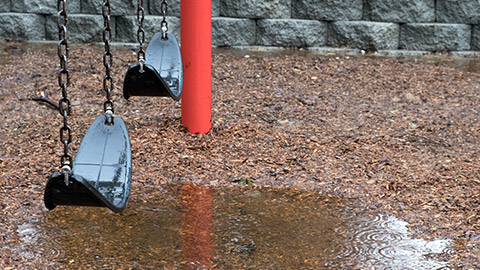
For several months the child care service Manager has been aware that the staff are unhappy with the conditions of the 3-5’s playground. After wet weather the ground is boggy underfoot. The path around the playground is uneven and cracked and lifted in several places creating a trip hazard. Two staff have had near-misses. It was agreed that the Director would report the staff’s concern to the Manager. The Manager advises the Director that the paths will be replaced as soon as possible, however the drainage is a long-term project which can’t be immediately addressed. It was suggested that the large grassed area at the front of the building could be investigated as an option for a temporary playground during periods of wet weather.
Here are the steps involved in the S.A.F.E. Risk Management Model:
| S.A.F.E | |
|---|---|
| Spot the Hazard | Cracked and uneven path – trip hazard. |
| Assess the Risk | High |
| Fix the problem | Replace the path; use alternate play area in wet weather. |
| Evaluate the results | Replace path – low; use alternative playground – low-moderate. |
Exclusion of ill children, educators and staff
The aim of exclusion is to reduce the spread of infectious disease. The less contact there is between people who have an infectious disease and people who are at risk of catching the disease, the less chance the disease has of spreading. Excluding ill children, educators and other staff is an effective way to limit the spread of infection in education and care services.
| Division of 2 Policies and procedures | |
|---|---|
| 168 | Education and care service must have policies and procedures |
| 169 | Additional policies and procedures - family day care service |
| 170 | Policies and procedures to be followed |
| 171 | Policies and procedures to be kept available |
| 172 | Notification of change to policies or procedures |
Under Division 2 of the Regulations, Regulation 168 to 172 explains to education and care services the expectation and requirements to have policies and procedures in place, available, followed and notification of changes to policies and procedures. For more information check out the regulations for more information.
Immunisation

Immunisation is a reliable way to prevent some infections. Immunisation works by giving a person a vaccine—often a dead or modified version of the germ—against a particular disease. This makes the person’s immune system respond in a similar way to how it would respond if they actually had the disease, but with less severe symptoms. If the person comes in contact with that germ in the future, their immune system can rapidly respond and prevent the person from becoming ill.
Immunisation also protects other people who are not immunised, such as children who are too young to be immunised, or people whose immune systems did not respond to the vaccine. This is because the more people who are immunised against a disease, the lower the chance that a person will ever come into contact with someone who has the disease. The chance of an infection spreading in a community, therefore, decreases if a large proportion of people are immunised, because the immune people will not become infected and can protect the vulnerable people; this is known as ‘herd immunity.
Educators should ask all parents to provide a copy of their child’s vaccination records. If the child has a vaccination record, make sure they have received all the vaccinations recommended for their age group. If the child has not been medically vaccinated (‘not medically vaccinated’ includes children who may have been naturopathically or homeopathically vaccinated), tell the parents that their child will be excluded from care during outbreaks of some infectious diseases (such as measles and pertussis), even if their child is well. This is because the effectiveness of naturopathic or homeopathic vaccinations has not been scientifically proven. A statement about excluding non-medically vaccinated children should be included in the education and care service’s immunisation.
Regulations 162
In regulation 162, Health information is to be kept in the enrolment record, in section (f), services are required to find out the status of the child. In section, g might identify that they have sighted the immunisation record.
Risk management is an organisational issue, and a successful program requires the commitment and cooperation of all. All centre managers and their staff need to recognise the fundamental importance of workplace health and safety risk management for it to work. The best practice is embedding workplace health and safety risk management into daily usage at all levels of an organisation. Achieving best practice is how you can integrate risk management principles and practices into everyday business practice. Work Health and Safety is fundamental to help assist the safety of staff members as well the children that are attending the education and care services.
Quality Area 2 of the National Quality Standard reinforces children’s right to experience quality education and care in an environment that provides for their health and safety. Educators support this when they promote each child’s wellbeing and healthy lifestyle and support each child’s growing competence, confidence and independence.
The approved provider, nominated supervisors, co-ordinators and educators have responsibility for supporting the health, protection, safety and wellbeing of all children. In exercising their responsibilities, they must take reasonable care to protect children from foreseeable risk of harm, injury and infection.
| Standard/Elements | Concept | Descriptor |
|---|---|---|
| QA2 | Children's health and safety | |
| 2.1 | Health | Each child's health and physical activity is supported and promoted |
| 2.1.1 | Wellbeing and comfort | Each child's wellbeing and comfort is provided for, including appropriate opportunities to meet each child's need for sleep, rest and relaxation. |
| 2.1.2 | Health practices and procedures | Effective illness and injury management and hygiene practices are promoted and implemented. |
| 2.1.3 | Healthy lifestyle | Healthy eating and physical activity are promoted and appropriate for each child. |
| 2.2 | Safety | Each child is protected. |
| 2.2.1 | Supervision | At all times, reasonable precautions and adequate supervision ensure children are protected from harm and hazard. |
| 2.2.2 | Incident and emergency management |
Plans to effectively manage incidents and emergencies are developed in consultation with relevant authorities, practiced and implemented. |
| 2.2.3 | Child protection |
Management, educators and staff are aware of their roles and responsibilities to identify and respond to every child at risk of abuse or neglect. |
Most education and care services use a series of checklists to ensure they maintain compliance and can provide evidence if ever required. Remember in the module 'Working in ECEC' where we discussed the three modes of evidence collection (Observe, Sight & Discuss), checklists are a good tool to ensure educators know what tasks to complete but also evidence demonstrated that the tasks are being completed.
Identifying Hazards
As an employee, you are required to follow work processes and procedures in identifying hazards and have procedures in place to help outline your responsibilities. When you are rostered onto a morning or afternoon shift you are required to sign off on the procedure tasks as you do them so as you have created a safe environment and identify hazards before children and parents enter the premises.
Depending on your workplace, the list of things you may need to check as you sign in or out includes, but is not limited to:
- Entrances and exits clear of clutter and easily accessible.
- Ensure all doors can be opened easily in case of an emergency.
- All windows should be locked, and blind cords should be out of reach of children.
- Ensure all floors are cleaned of spills, or items that can be a choking hazard or tripping hazard
- Check to make sure electrical outlets are covered and cords are not reachable
- Check to ensure hot items/areas are clearly marked and out of reach of children
- Ensure that heavy items cannot be pulled or knocked down creating injury
- Check to make sure smoke detectors are up to date
- Ensure furniture is safe and functional for its intended purpose
- Ensure shelves are secured to prevent falling over
- Ensure cleaning supplies and chemicals are stored properly with locks
- Check equipment for breakages, loose parts or other signs of wear and tear. Remove and repair or replace.
- Ensure bathrooms are clean and free of spills or chemicals.
Educators have a responsibility in accordance with the scope of their job role to identify workplace hazards and to take action to reduce risk of harm. Risk in relation to any hazard is the probability and consequences of injury, illness or damage resulting from exposure to a hazard. The types of risks that you will face in your work will vary from place to place and the type of work you do. However, one thing remains constant - you need to ensure the safety and health of yourself, your clients, and other people.
Use the following questions to check your knowledge. You can check the correct answer by clicking on the 'Answer' button:
Q1. What is the responsibility of the following roles within a workplace: PCBU, worker and director?
- PCBU - Holds prime responsibility for ensuring workplace safety
- Worker - Must follow all reasonable instructions relating to workplace health and safety
- Director - Must ensure organisation meets its obligations for workplace health and safety
Q2. Name your state/territory’s WHS regulator and WHS / OHS Act.
| State or Territory | Act | Regulator |
|---|---|---|
| ACT | Work Health and Safety Act 2011 (ACT) | WorkSafe ACT |
| NSW | Work Health and Safety Act 2011 (NSW) | SafeWork NSW |
| Northern Territory | Work Health and Safety (National Uniform Legislation) Act 2011 (NT) | NT WorkSafe |
| Queensland | Work Health and Safety Act 2011 (QLD) | Workplace Health and Safety Queensland |
| South Australia | Work Health and Safety Act 2012 (SA) | SafeWork SA |
| Tasmania | Work Health and Safety Act 2012 (TAS) | WorkSafe Tasmania |
| Victoria | Occupational Health and Safety Act 2004 (VIC) | WorkSafe Victoria |
| Western Australia | Occupational Safety and Health Act 1984 (WA) | WorkSafe WA |
Q3. Describe the key points from a Code of Practice relevant to your workplace or role.
- Health and Safety (How to Manage Work Health and Safety Risks) Code of Practice 2015. Key points:
- How to identify hazards
- Risk assessment processes
- Using the hierarchy of control approach
- Developing and implementing risk controls
- Reviewing risk controls
- Work Health and Safety (First Aid in the Workplace) Code of Practice 2015. Key points:
- Requirements for provision of first aid equipment
- Specific requirements for first aid facilities and equipment based on industry and size o organisation
- Requirements for provision of first aid trained staff
- Procedures for providing first aid and information about first aid to workers.
- Work Health and Safety (Hazardous Manual Tasks) Code of Practice 2015. Key points:
- Definition of hazardous manual tasks
- Evaluating and controlling risks associated with hazardous manual tasks
- Ways in which risks can be controlled
Q4. What is the aim of WHS legislation?
- reduce risks in a place of work
- make sure work health and safety issues are dealt with and resolved fairly
- help businesses and workers achieve a healthier and safer working environment
- promote work health and safety advice, information, education and training
- have effective ways for this law to be followed and enforced
- improve health and safety standards.
Q5. Whose safety does the WHS legislation protect?
- employees
- contractors
- subcontractors
- outworkers
- apprentices and trainees
- work experience students
- volunteers
- employers who perform work.
The general public is also protected so that their health and safety isn’t put at risk by work activities.
